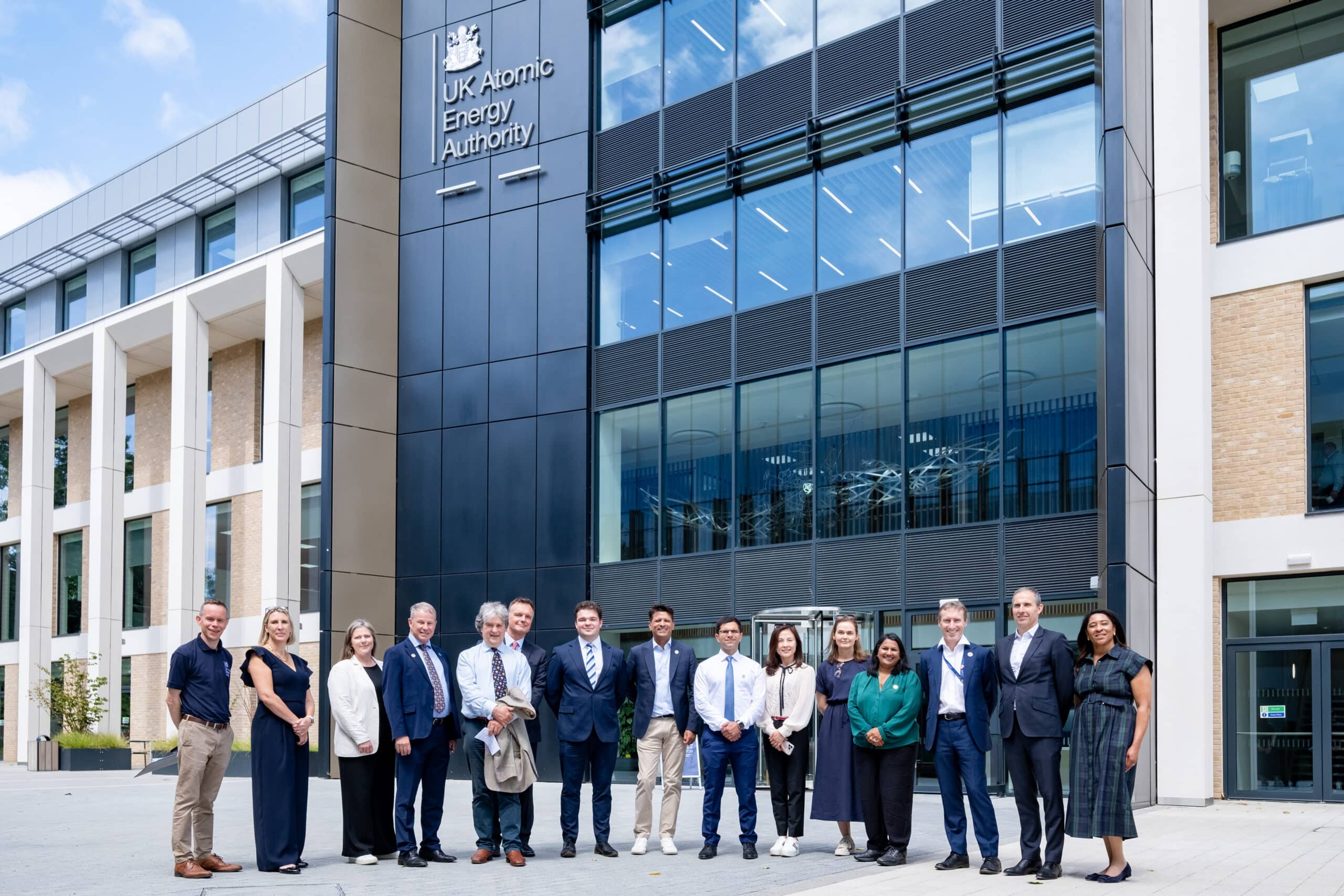From Vision to Fusion: Inside SMI’s Visit to the UK’s Leading Fusion Energy Labs

Jeff Zeller | June 30th, 2025

This week, Matroid joined a select delegation organized by the Sustainable Markets Initiative for a behind-the-scenes tour of two of the UK’s most advanced nuclear fusion research centers: the UK Atomic Energy Authority (UKAEA) and Tokamak Energy.
The visit was more than a tour. It was a firsthand look at the future of clean energy, where science, engineering, and artificial intelligence are collaborating to address one of the world’s most pressing challenges: achieving sustainable power on a large scale.
What Makes Fusion Different
Nuclear energy has been part of the global energy mix for decades, primarily through the fission process. Fission splits atoms to release energy, which is efficient and carbon-free but creates long-lived radioactive waste and requires complex safety systems.
Fusion is a different process. It joins atoms together, producing energy in the same way the sun does. The fuels used for fusion, such as hydrogen isotopes, are widely available. The process creates minimal waste and carries far fewer safety risks. If a fault occurs, the reaction stops naturally.
To make fusion work on Earth, scientists need to reach temperatures hotter than the sun. At these extremes, atoms can fuse and release energy. Keeping that reaction stable and contained requires advanced magnetic systems, high-performance materials, and exact control.
This is where decades of research are finally starting to pay off.
The Tour
At UKAEA’s Culham Campus, the team toured the JET (Joint European Torus) fusion facility. JET has been at the center of European fusion research and is now being decommissioned after decades of successful experimentation.
They also visited the Materials Research Facility, where scientists test components designed to survive the extreme conditions of a working fusion plant. At RACE, a robotics division focused on remote operations in hazardous environments, engineers are developing systems that will maintain fusion reactors in real-time.
Later in the day, the delegation traveled to Tokamak Energy. There, researchers are developing compact spherical tokamaks and high-temperature superconducting magnets. These technologies are enabling fusion systems to become smaller, more efficient, and closer to commercial deployment.
Reza Zadeh, CEO of Matroid, initiates a fusion pulse at Tokamak Energy. A snapshot of a future powered by clean energy.
One of the highlights of the visit came when Reza activated a controlled fusion pulse. While research labs create these reactions regularly, being there in person makes the experience real in a different way. It marks how close fusion is to becoming something far more than an experiment.
The Role of AI and Computer Vision
Fusion systems must run with extreme reliability. Everything from maintenance to safety depends on speed, precision, and the ability to identify problems before they occur. These are all areas where computer vision and AI can support operations.
Our platform helps by:
- Detecting surface defects or structural issues in equipment early
- Guiding robotic arms and autonomous machines in complex environments
- Monitoring PPE compliance and personnel movement in restricted zones
- Analyzing thousands of frames of experimental data faster than human teams can
We have already deployed these solutions in the energy, aerospace, and manufacturing sectors. Fusion is a logical extension of that work. Its complexity demands innovative tools that can operate in real time and adapt to changing conditions.
What Comes Next
Fusion is moving from theory to application. It is no longer just a scientific experiment. It is a realistic path toward clean, continuous, and scalable energy.
We are proud to play a supporting role in that transition. The work we saw at UKAEA and Tokamak Energy proves that public and private efforts can deliver progress when they share a vision and focus on the long term.
Thanks to the scientists, engineers, and hosts who welcomed our team. And thank you to the Sustainable Markets Initiative for bringing innovators and decision-makers together to witness this moment.
What we saw is just the beginning.
#UKAEA #TokamakEnergy #SMITerraCarta #SMIAstraCarta #SeeingIsBelieving
Building Custom Computer Vision Models with Matroid
Dive into the world of personalized computer vision models with Matroid's comprehensive guide – click to download today